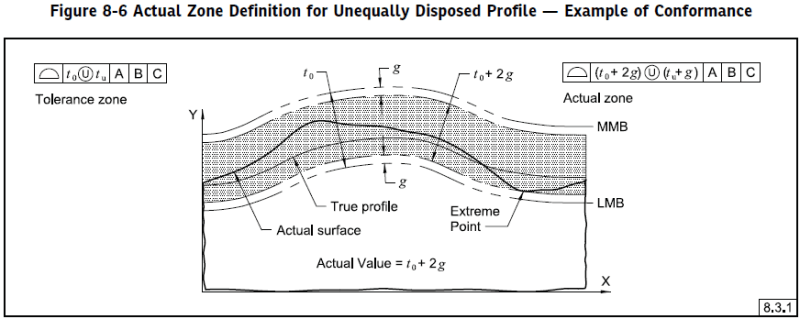It doesn't help quickly assess conformance to have very different outcomes resolve to the same number, a number which has no engineering or manufacturing significance. Generally engineers want - conforms - Yes or No and manufacturing wants to know - is the process heading towards high or low.
Method C is - create your own method; by definition it won't be standard. I don't even have to use Y14.45 to do that.
I'm sure an example where knowing the virtual width of the tolerance zone was presented as affecting a non-geometric performance characteristic; what was it? What did design engineers present to support that reporting?
It's not a question worth between $15,000 and $30,000 to me to find out, or even the typical $1500-$2000 training rate, but considering the total expenditure by all the participants in the committee must be close to $1 Million per revision it seems like answers to questions like that should be available.
Perhaps for size tolerance reporting - if a part requirement is dia 1.0 +/-0.1 and the as-produced part is dia .91 then the variation is reported as 0.18 and if the as-produced part is dia 1.09 the variation is also reported as 0.18? That is what it would be for a basic dia 1.00 and profile of surface of 0.1 (fixed because profile is a radial control). And if the as-produced part was oval with a minor dia of .91 and a major diameter of 1.09, that size would also be reported as a variation of 0.18, size tolerance or profile tolerance.
But size isn't reported that way. It's reported as minimum material and UMME. Two numbers that represent functional performance and manufacturing limit-tracking utility.
When 737 rudder valves were prone to thermal transient interference, had they been defined with a profile tolerance and reported by Method B there would have been no way to separate out those at the high side, which interfered, from those at the low side, which did not. Thankfully they used size instead of profile and only the susceptible units were withdrawn from service and no more planes crashed, rather than having to also take units which would never have a problem out of service. That is an example of a non-geometric functional performance characteristic.
I want a more usable answer than "this is what was adopted after much debate." Maybe the debate was only about reporting and not about utility.



